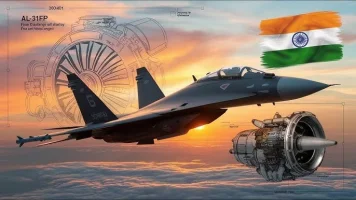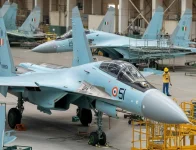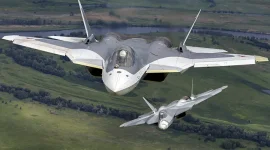- Views: 3K
- Replies: 6
India's aerospace sector is set for a notable advancement as Hindustan Aeronautics Limited (HAL) prepares to introduce the first Tejas Mk1A Light Combat Aircraft (LCA) from its Nashik Division.
This event also signifies the operational commencement of HAL's third LCA production line, a crucial step in enhancing India's indigenous defence manufacturing capabilities.
The Nashik facility is vital for increasing the production rate of the Tejas aircraft to meet the growing requirements of the Indian Air Force (IAF).
The initial Tejas Mk1A aircraft from the Nashik plant, equipped with a Category-B (CAT-B) engine, is scheduled for its inaugural flight in June 2025. This CAT-B engine, understood to be a variant from the General Electric F404 family, is being employed as an interim measure.
This approach allows airframe testing and production to proceed while HAL continues efforts to integrate the specifically contracted General Electric F404-IN20 engines, the supply of which is being ramped up.
Meanwhile, in Bengaluru, the first Tejas Mk1A unit fitted with a newly delivered F404-IN20 engine is currently undergoing final design and development activities, indicating sustained progress in the overall programme.
The Tejas Mk1A is an advanced version of the indigenous fighter, featuring significant upgrades over the preceding Mk1 variant. These enhancements include an Active Electronically Scanned Array (AESA) radar, a modern electronic warfare suite, the capability to launch beyond-visual-range missiles, and improved maintainability, all aimed at bolstering the IAF's combat effectiveness.
The Nashik plant's contribution is critical for fulfilling the IAF's order for 180 Tejas Mk1A aircraft, which is part of a substantial contract valued at approximately ₹1.2 lakh crore, formalised in 2021.
This new Nashik facility complements HAL's existing Tejas production lines in Bengaluru, which have been delivering earlier Tejas Mk1 variants since 2015. The successful commencement of flight operations from Nashik will serve as a validation of HAL's strategy to decentralise and accelerate the production of the Tejas.
This expansion is key to addressing previous production delays that had drawn concern from the IAF and defence analysts, and aims to ensure a more rapid supply of these advanced aircraft.
Following its maiden flight in June, the Nashik-produced Tejas Mk1A will undergo a comprehensive series of tests. Upon successful completion of these evaluations, the aircraft is anticipated to be formally handed over to the Indian Air Force, with delivery likely towards the end of 2025.
The IAF plans to induct these new Tejas Mk1A fighters into several units, including its esteemed No. 45 Squadron, also known as the “Flying Daggers.”
These indigenous aircraft are slated to replace the ageing MiG-21 fleets, marking a significant step in the modernisation of India's air defence capabilities.






